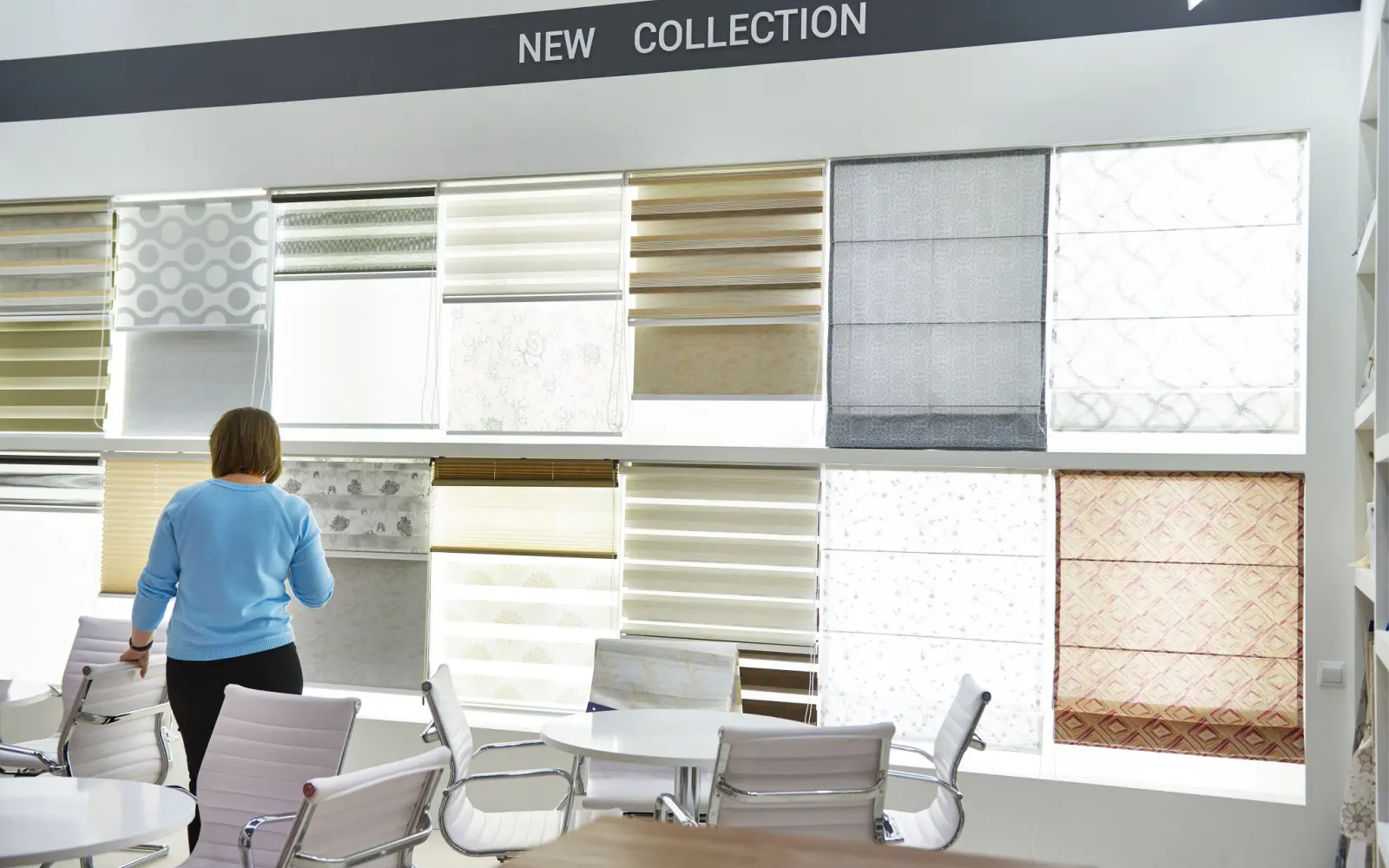Many different types of blinds can add a unique aura to your living space, bedroom, or dining area.
Blinds are the perfect addition to a window that can add character, privacy, and aesthetic value to any and every room in your home.
Types of Blinds for Your Home
5 different types of blinds work best for any type of home: Venetian blinds, vertical blinds, Roman blinds, pleated blinds, and roller blinds.
No matter what type of blinds you choose, these products can help you alter the light in your house, provide versatility to the style of your home, and increase the functionality of a space.
The 5 Most Common Types of Blinds
Check out the most common types of blinds that you can use for your home, apartment, office, or room rental to help filter incoming light.
Let’s see the characteristics, pros, and cons of each type of blind so you can make the best decision for the aesthetics and functionality of your space.
1. Venetian Blinds
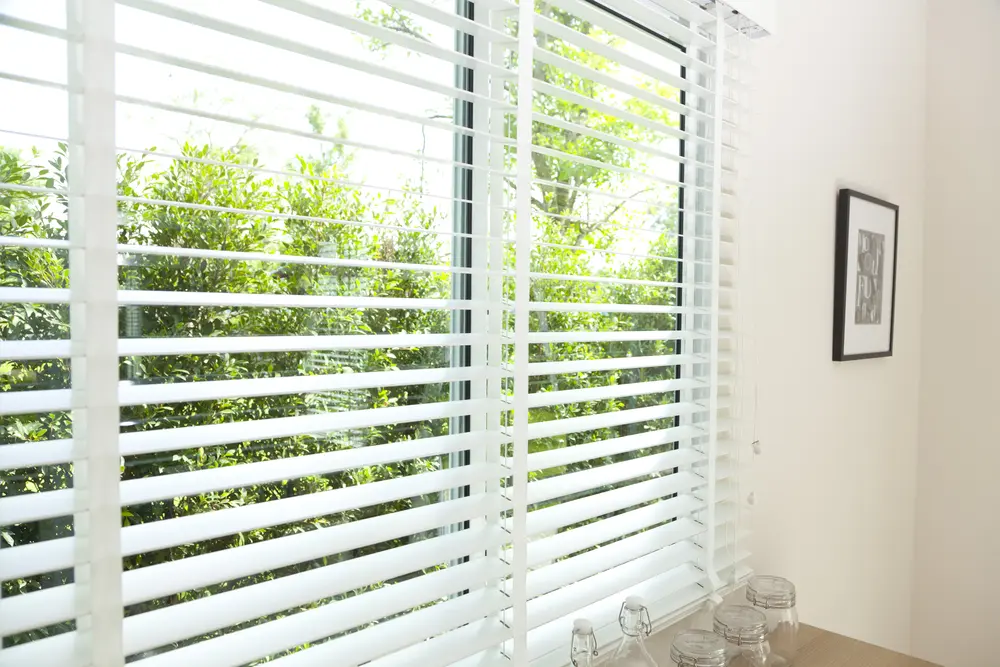
Ben Bryant/Shutterstock
Venetian blinds are a versatile type of blind that can be made from a variety of materials. Most homeowners choose to have their Venetian blinds made in either fake wood, real wood, or aluminum.
Real wood is more costly, but it is often more durable than the other options. Aluminum is a smart choice if you want a modern and sleek look, whereas fake wood is a good option if you don’t want to spend as much money.
This type of blind is often chosen for its decorative nature and easy-to-use pull mechanism. You can easily manipulate the blinds to let in the correct amount of light by using one control for tiling the blinds and the other for raising and lowering the slats.
There are many reasons to use Venetian blinds compared to other alternatives, such as:
- Low price. Venetian blinds are cheaper and more affordable than other options on the market.
- Control. Owners can easily control the amount of light and the direction of light coming into any room.
- Choose the light. Venetian blinds are good choices for those who want to take advantage of windows facing in different directions (ex: north-facing windows that let in little light vs. south-facing windows that let in tons of light).
However, you need to keep the following in mind before choosing Venetian blinds for your house:
- Not completely dark. Venetian blinds let in small amounts of light, even if you fully close them, so if you want a completely dark room, you may need to choose another type.
2. Vertical Blinds
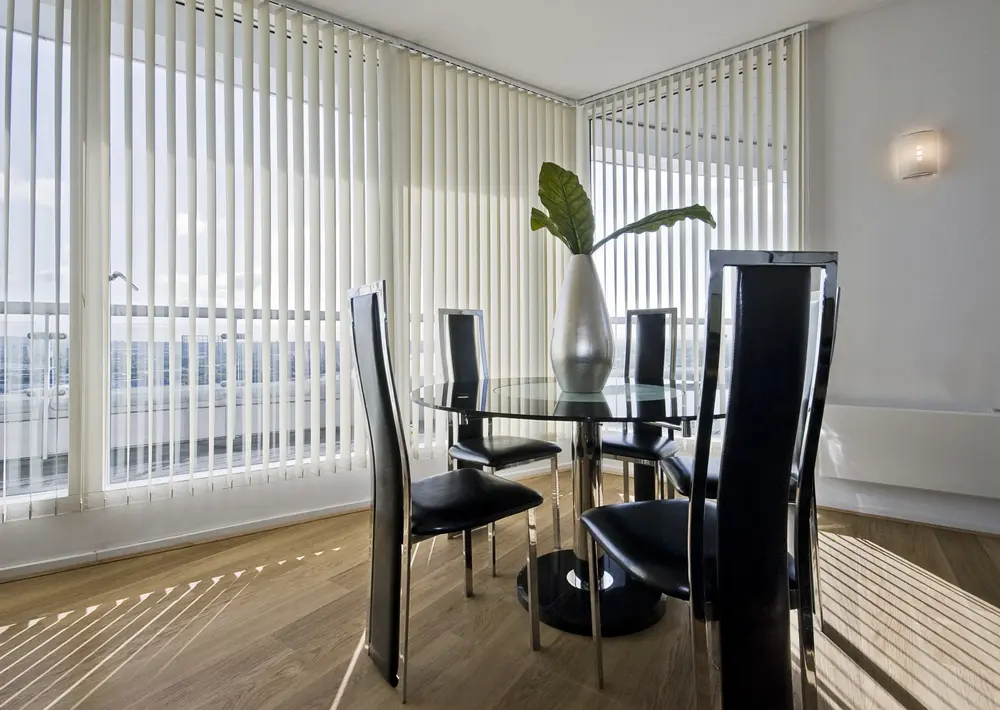
Yampi/Shutterstock
A second common type of blind for your home or office is a vertical blind. Vertical blinds are very functional, stylish, and low-priced; they are quite similar in look and appearance to Venetian blinds, minus the fact they are vertical instead of horizontal.
They are very easy to use with the two pull cords that let users manipulate the angle and the position of the blinds on the windows. The main reasons to use vertical blinds vs. other options include:
- Affordable. Even compared to Venetian blinds, vertical blinds are the cheapest option for homeowners on the market.
- Variety. Vertical blinds come in various colors and materials to work with any type of interior or exterior of the home.
However, you must also consider a drawback if you are thinking of choosing vertical blinds for your home:
- Time-consuming to maintain. Vertical blinds take longer to clean and maintain, which can make them less desirable if you are looking for something low-maintenance.
3. Roman Blinds
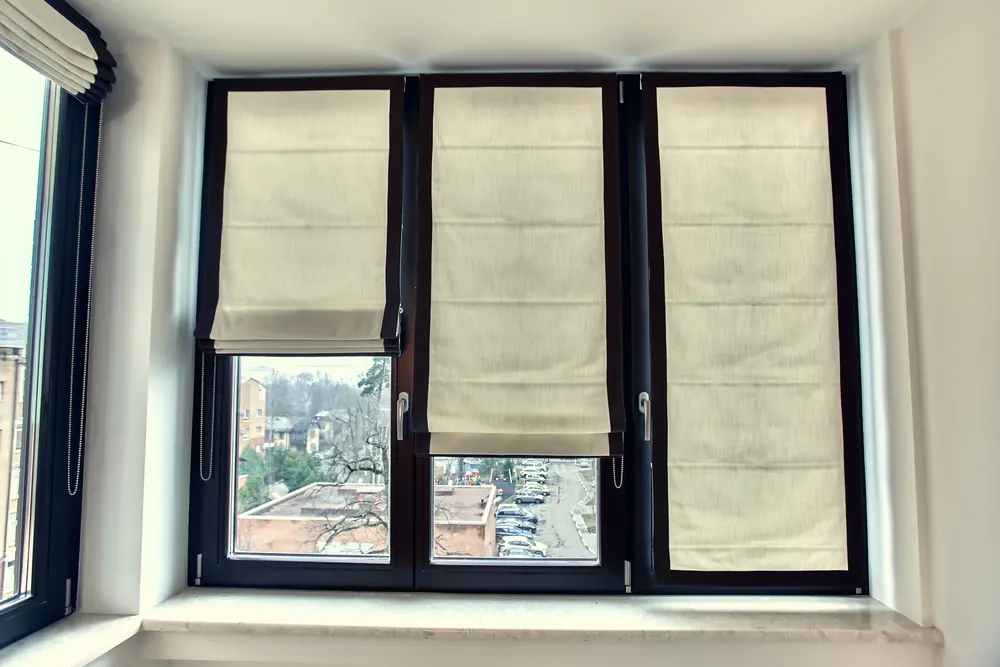
Gillismitch/Shutterstock
Roman blinds are a high-end and luxurious option for those who want to increase the value of their house and boost the aesthetics of a room. Since these types of blinds are made from thick fabric, they are more upscale than other options on the market.
The main benefit of choosing Roman blinds instead of vertical blinds or other choices would be their energy-efficient capabilities. Roman blinds have thicker fabric that helps keep in, or keep out, the light and heat.
The drawbacks of Roman blinds compared to other options include the following:
- Damp. Since Roman blinds have thicker fabric and less permeability than other options, they are not the best choice for damp environments. If you are thinking of adding blinds to your bathroom, kitchen, or basement, consider using another type of blind that will not absorb moisture.
- High cost. Roman blinds are costlier than other options due to their unique designs and fabrics. This may not be the best choice if you are looking to save money or for renters who do not want a permanent fix.
4. Pleated Blinds
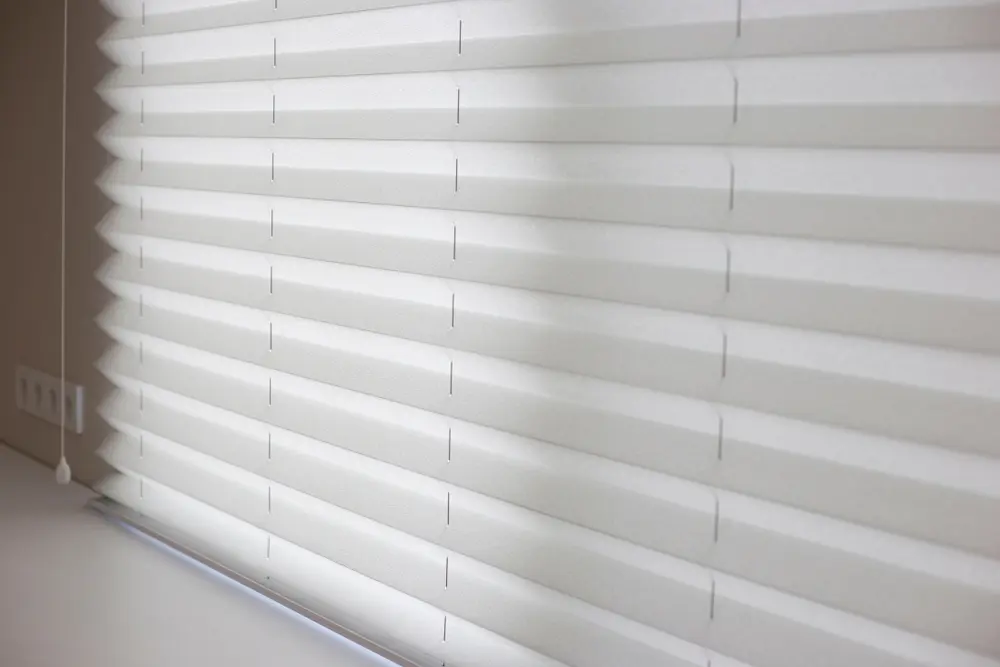
Astibuk/Shutterstock
Pleated blinds are the ideal choice if you want a more aesthetic notion that doesn’t just look like the typical “blinds.” Pleated blinds use fabric that folds open and closed to add a new type of design and pattern to a room.
Pleated blinds are a smart choice for those who want to spruce up a plain room or add a bit of texture to a boring area. The pros of using pleated blinds include the fact that instead of using cords to open and close blinds.
Ultimately, this could get in the way of pets and children; the tabs that open the pleated blinds are safer and less hazardous for children. The only drawback of using pleated blinds is that they can be more expensive than other options on the market.
This is especially true of venetian blinds and vertical blinds. So it’s usually best for those who want to revamp their home and increase the property value of their house to consider pleated blinds.
5. Roller Blinds
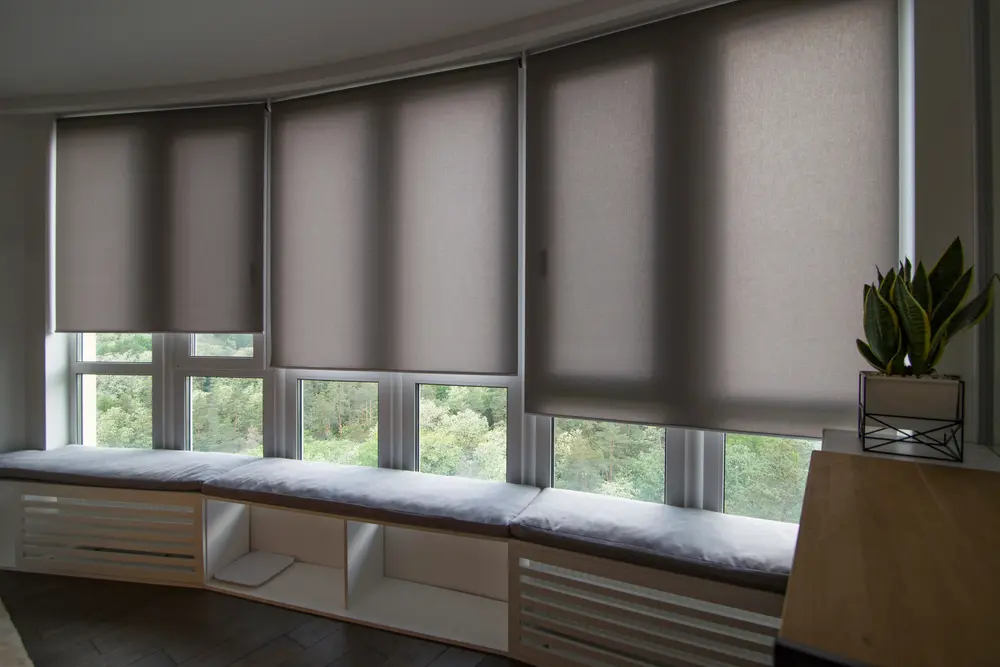
Astibuk/Shutterstock
Roller blinds are fabric blinds that use one or two rollers to move up and down the window. Not only are roller blinds sleek and modern, but they can also add protection against glare, bright sunshine, and streams of light coming through the window at night.
The roller blinds are great choices if you want a simple, minimalist, and low-key addition to your home or apartment.
Roller blinds are effective choices if you want to use day and night blinds. Day blinds and night blinds are a smart combination for those who want to block out the sun and use blackout strips to keep the interior light low.
The main reasons to use roller blinds are:
- Versatility. If you need a versatile option, roller blinds are for you. Compared to the other choices, roller blinds are the most functional and versatile for those who want a do-it-all option without breaking the bank.
- Variety. Roller blinds come in a wide range of colors, sizes, shapes, and materials. You can personalize your own roller blinds to work with the interior of your house or apartment.
The only disadvantages of using roller blinds are:
- Blocking out light. Although you can choose thicker material and darker colors, roller blinds are still not effective at completely blocking the light.
- Energy efficiency. Roller blinds are not the most energy-efficient or environmentally-friendly option on the market. Due to the thin fabric, which makes it cheaper, the roller blinds are not as good at keeping in the heat or keeping out the light.
Things to Consider
There are a few things to keep in mind before you choose the specific type of blinds you need for your home, condo or apartment:
- Insulation requirements. Do you want an energy-efficient blind? If so, make sure you look at the energy ratings of each type of blind to choose one that can help you keep in the heat during cold winter days.
- Humidity. Make sure you do not choose thick blinds or those with heavy fabric if you are installing blinds in an area that is prone to humidity and dampness. Choose lightweight and low-fabric blinds in bathrooms and kitchens to avoid any mold and mildew buildup over time.
- Safety. Consider choosing blinds with a pull tab if you have young kids who can get caught in the cords or strings of other blinds.
- Window. Measure the window size to see which type of blinds would look best on the specific size of the window (ex: bathroom window vs. floor-to-ceiling window).
- Budget. Narrow down the types of blinds you can afford by looking at your budget and seeing which type of blind is the cheapest or most durable.
- Cleaning needs. If you do not want to frequently clean your blinds or spend half an hour cleaning the large slats, consider choosing low-maintenance blinds that are easiest to clean in a few minutes.
- Lighting. Homeowners need to decide if they want their home to be light and bright or if they would prefer it to be dark and dim. Choosing your lighting needs can help you decide if you want a thicker fabric for your blinds or if you would rather have more natural lighting blinds that can let in the sunshine.
Frequently Asked Questions
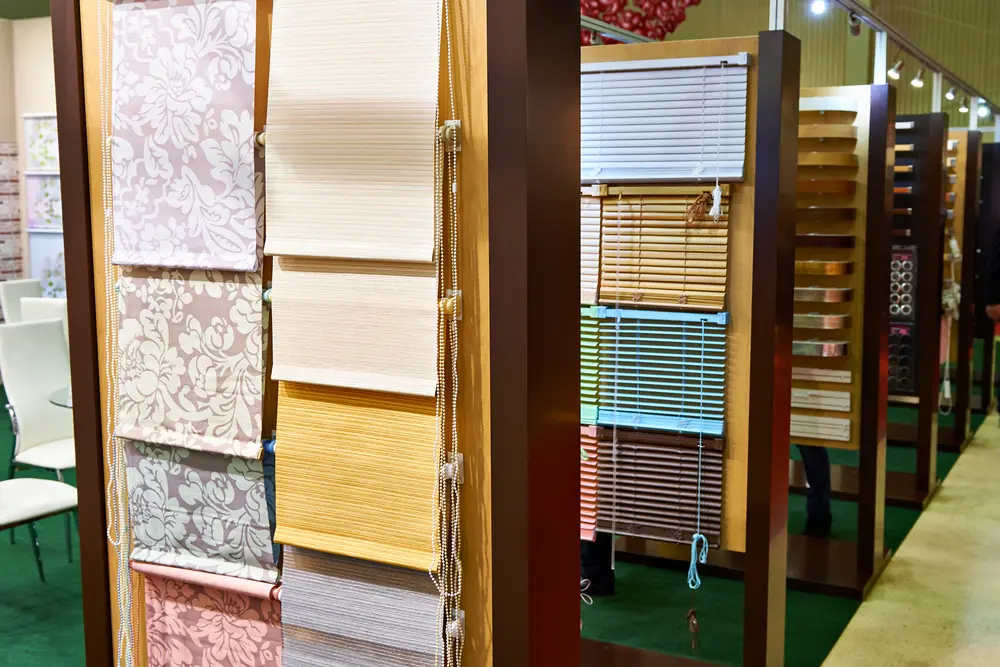
Sergey Ryzhov/Shutterstock
Check out these commonly asked questions to see what type of blinds work best for your home.
How many types of blinds are there?
There are numerous types of blinds that can work for various window styles, housing types, and pricing needs. There are 14 types of blinds that can work well for any type of window.
What types of blinds are in style in 2022?
Blinds go in and out of style, but there are dozens of types that can stay in style over the years. Some of the most common blinds in style this year include roller shades, smart blinds, cordless blinds, eco-friendly blinds, and many others.
What type of blinds is most popular?
There are different types of blinds that have stayed popular over the years. The most popular type of blinds in 2022 include plastic blinds, blackout blinds, roller shades, or Roman shades.
Which blinds are best for windows?
There are specific types and brands of blinds that work well for windows in any home, apartment, or office. Some of the most popular blinds that are best for windows include Levolor blinds, Allen + Roth blinds, and Bali blinds.
Which Type of Blind Will You Choose?
So, what are the best types of blinds for your house in 2024? In short, 5 major types of blinds can work well for any home, apartment, condo, or office building—Venetian, Roman, roller, vertical, and pleated blinds are all smart choices for homeowners.
The best way to narrow down your selection of blinds is to consider your budget, personal style, window size, durability needs, lighting requirements, and humidity level in your house.
Once you have gone through your criteria, you can choose the best type of blinds for your housing needs.

